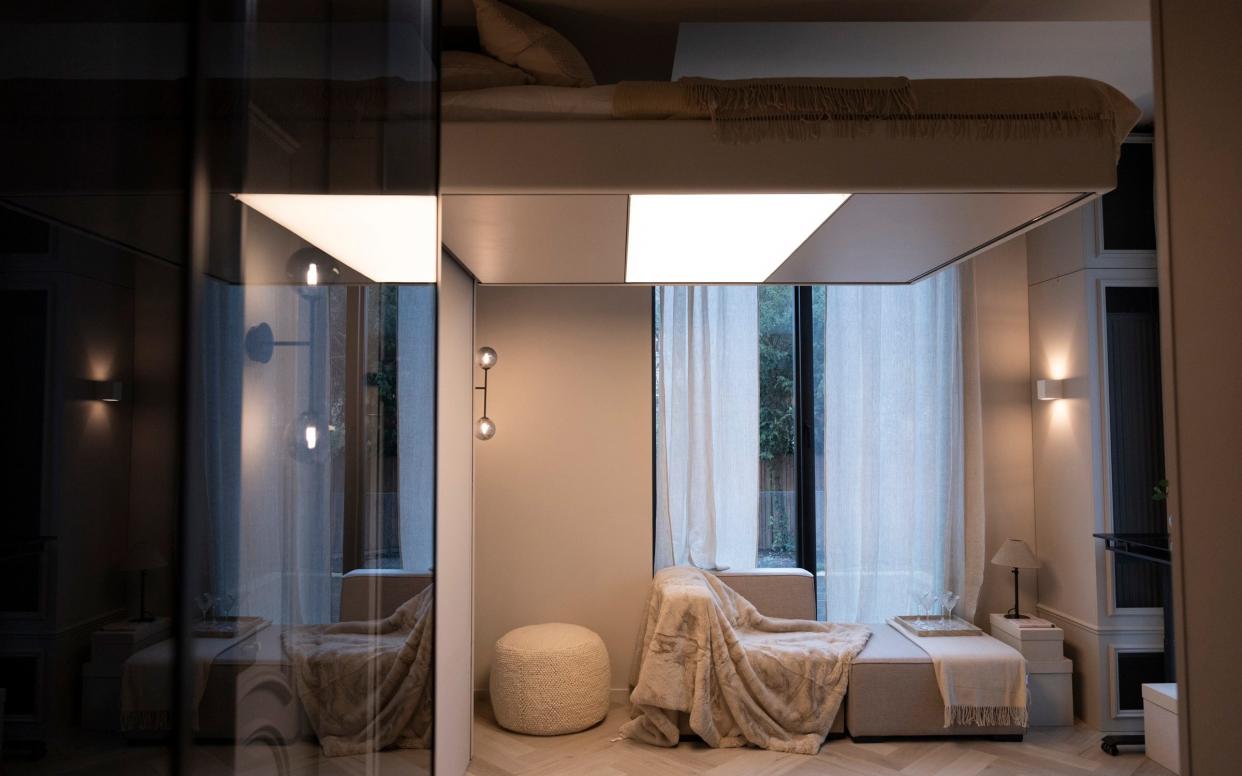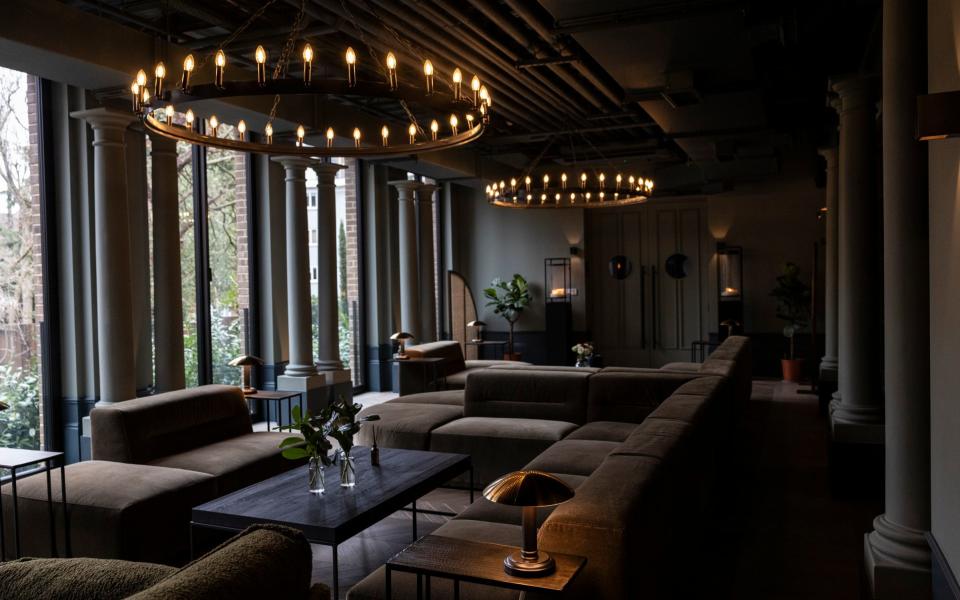Inside the flats that are like a ‘high end retirement home’ for rich millennials

In a flat in north-west London, a double bed is being slowly lowered to the floor via a pulley, like a sail on a ship. Moments ago it had been suspended 10 feet in the air.
It occupies roughly a quarter of the floor space, turning what was previously a small living room into a small bedroom. A few feet away is the kitchen, an equally cramped affair with dark worktops; the decor evokes a hotel, with herringbone wood floors, floor-to-ceiling windows, and beige throws.
Welcome to the future of homes, where renters pay through the nose to “co-live” in tiny apartments, sharing communal space and joining a ready-made community.
The studios are a triumph of space economy: the flat has more storage than a standard two-bedroom flat, and it is all hidden within the walls. Just as well, as a space this precariously organised would suddenly feel very small in the presence of even the slightest bit of clutter.
Pillars give it the illusion of a segmented kitchen and living space. The bathroom is the only part of the flat separated by a door.
These apartments are the brainchild of property mogul Ali Ravanshad. His company, Dandi, purchased the dilapidated block of flats in Maida Vale for around £16.8m, and spent roughly the same amount on renovations.

Ravanshad returns the bed to the ceiling. As he pulls a table out from the wall, he gestures upwards: the underside of the bed doubles as a ceiling light. In fact, it’s a Sad lamp, for seasonal affective disorder, which emits light more similar to sun rays than typical lamps and is supposedly better at waking you up on dark winter mornings.
The entire building is full of touches like this. On the way in, I’m told, the scent of sandalwood and jade-green walls has set me at ease without me even knowing it. “We’ve tapped into you subconsciously,” Ravanshad tells me in the communal area, as chilled lo-fi music plays in the background.
The remaining 160 flats in the building are yet to be advertised, but 45 have already been let, mostly to 30-35-year-olds.
The set-up is similar to a high-end retirement home – just for rich millennials between phases in life. A communal area on the ground floor offers a constant supply of free coffee, and there is brunch once a month; there is a gym on the roof where residents can take pilates classes; the communal area is set up like a WeWork.
Ravanshad says residents are drawn to this kind of co-living by the promise of community. Several have become lifelong friends and holidayed together and others have found the common rooms fertile networking ground.
But this doesn’t come cheap: it costs at least £1,800 a month plus around £200 in utilities.

London’s rental market is shrinking at an alarming rate as buy-to-let landlords, throttled by soaring mortgage rates, the withdrawal of tax relief, and the costs of insulating older properties, flee the market.
The ever-widening gap between supply and demand has translated into higher monthly payments as the remaining landlords jack up rents to cover their mortgages. Data from flatsharing platform SpareRoom found the average rent for a single room in London was £1,074.
Ravanshad describes the process of setting these buildings up in almost philanthropic terms. He despairs at the plummeting quality of London’s housing stock at the hands of “complacent landlords”. Nonetheless, Dandi is similarly at the mercy of interest rates. “If they go up, rent has to go up,” Ravanshad says.
It’s hard to tell whether communal living arrangements like Dandi’s are a solution to the rental crisis or a symptom of it. The apartments are for rent only, and tenants cannot change their energy supplier, instead paying business rates for their power use – meaning they are not protected by the energy price cap.
“We have seven of these in London, but we aim to have 70,” says Ravanshad. But he admits that Dandi’s tenants rarely rent there for more than a few years. The customer base is transient – entrepreneurs, tech workers, moneyed international students, and curiously but overwhelmingly, the recently divorced.
“The first guy who moved in here was a 45-year-old and he had an argument with his husband, left his flat to him, and was eventually brought here,” recalls Ravanshad. “ After two hours he got emotional and started to cry – he loved it here.”
Recommended
Why rents in America are plummeting – but Britain’s are soaring

